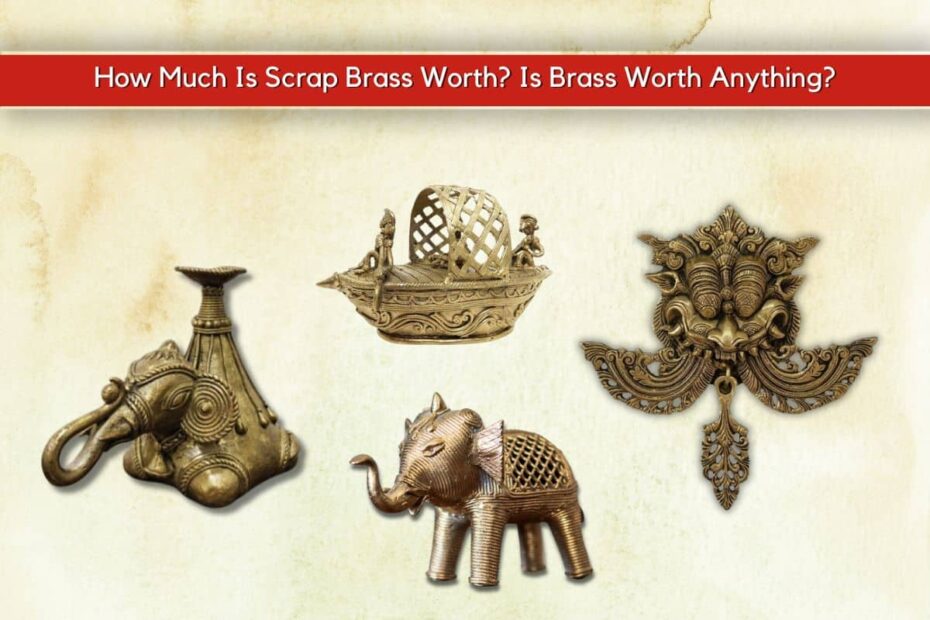A Lifetime of Metal Memories: My Journey into Brass Valuation
Let me take you on a journey through decades of metal collecting, where every piece of brass tells a story far beyond its monetary value. As someone who has spent years tracking the intricate world of metal recycling and antique collection, I‘ve learned that brass isn‘t just a metal—it‘s a living, breathing testament to human innovation and craftsmanship.
The Unexpected Treasure in Your Hands
Imagine holding a piece of brass that has survived generations. Perhaps it‘s an old marine fitting from a vintage ship, a decorative handle from a Victorian-era home, or a musical instrument component that has witnessed countless performances. Each piece carries a unique history, and more importantly, a potential financial opportunity that many people overlook.
Understanding Brass: More Than Just a Metal Alloy
Brass isn‘t a simple metal—it‘s a sophisticated alloy with a rich metallurgical heritage. Composed primarily of copper and zinc, brass has been a cornerstone of human technological advancement for centuries. Its unique properties—resistance to corrosion, excellent conductivity, and remarkable malleability—have made it indispensable across numerous industries.
The Metallurgical Symphony of Brass Composition
When copper and zinc dance together, they create a metal that‘s more than the sum of its parts. The precise ratio of these elements determines the brass‘s characteristics, influencing everything from its color to its structural integrity. Red brass, with its higher copper content, gleams differently from yellow brass, each telling a distinct metallurgical story.
Current Market Landscape: Brass Valuation in 2024
As of 2024, the brass scrap market presents a fascinating economic ecosystem. Current pricing ranges between [1.40 – $2.25] per pound, but this is far from a static figure. The value fluctuates based on complex global economic dynamics, industrial demand, and recycling trends.
Factors Influencing Brass Scrap Pricing
Several nuanced elements contribute to brass valuation:
Global Industrial Demand: The manufacturing sectors in China, India, and the United States significantly impact brass pricing.
Technological Innovations: Emerging technologies requiring specialized metal alloys can suddenly shift market dynamics.
Environmental Regulations: Stricter recycling policies and carbon emission standards indirectly influence metal trading.
A Collector‘s Perspective on Brass Types
Through years of collection, I‘ve learned that not all brass is created equal. Each type carries its own intrinsic value and historical significance.
Red Brass: The Connoisseur‘s Choice
Red brass, with its higher copper content, represents a premium material. Typically found in specialized plumbing components and marine equipment, it commands a higher price due to its superior composition. Collectors and industrial buyers alike prize red brass for its durability and aesthetic appeal.
Yellow Brass: The Versatile Workhorse
Yellow brass might seem ordinary, but it‘s anything but. Used extensively in musical instruments, architectural elements, and decorative arts, it represents the most common brass variant. Its slightly lower copper content makes it more affordable while maintaining excellent structural properties.
Practical Valuation: How to Maximize Your Brass Scrap Potential
Let me share a strategy developed over decades of metal trading. Maximizing your brass scrap value isn‘t just about weight—it‘s about understanding market nuances and presentation.
Preparation is Key
Clean brass fetches better prices. Remove paint, eliminate non-brass attachments, and ensure minimal contamination. A meticulously prepared batch can increase your returns by 15-20%.
Environmental Considerations: Beyond Monetary Value
As a collector who has witnessed environmental changes, I cannot overemphasize the importance of metal recycling. Brass recycling isn‘t just a financial transaction—it‘s an act of environmental stewardship.
The Carbon Footprint Perspective
Recycling one pound of brass saves approximately 85% of the energy required to produce new brass from raw materials. This isn‘t just a statistic—it‘s a tangible contribution to reducing global carbon emissions.
Future Outlook: Brass in the Modern World
The future of brass looks promising. With increasing demand in renewable energy infrastructure, electric vehicle manufacturing, and advanced technological applications, brass remains a critical material.
Emerging Markets and Opportunities
Countries like Vietnam, Indonesia, and Mexico are becoming significant players in brass manufacturing and recycling, potentially reshaping global metal trading dynamics.
After decades in this field, here‘s my candid advice: patience and knowledge are your greatest assets. Monitor market trends, build relationships with local scrapyards, and never underestimate the potential of a well-maintained brass collection.
A Final Word of Wisdom
Brass isn‘t just a metal—it‘s a bridge between history and innovation, between individual effort and global sustainability.
Conclusion: Your Brass Journey Begins Now
Whether you‘re a hobbyist, a professional scrapper, or someone who‘s inherited a collection of brass items, remember: every piece tells a story. Your role is to understand, appreciate, and responsibly manage this remarkable material.
Recommended Next Steps
- Inventory your brass items
- Research local scrap metal regulations
- Connect with professional metal recyclers
- Stay informed about market trends
Brass awaits your discovery—are you ready to unlock its potential?
